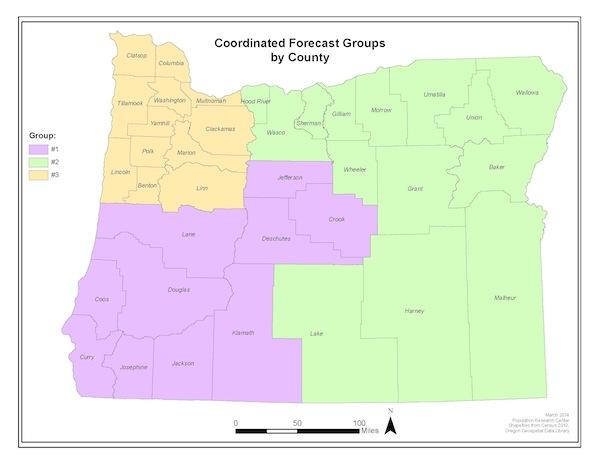Population forecasts for Region 1 Posted

Beginning in 1973 with the passage of Senate Bill (SB) 100, Oregon’s growth management system has relied on population forecasts as the primary tool for determining Urban Growth Boundary (UGB) expansions, as well as for crafting planning policy. By estimating future populations based on historic and current trends, as well as assuming the likelihood of future events, population forecasts provide necessary information to help planners, public officials, private firms, and developers better understand the short and long-term implications of population growth in local areas.
In the recent past, Oregon law required that counties prepare coordinated population forecasts according to "generally accepted" demographic methods, which yielded forecasts produced with a highly diverse set of methods. Equally important, the prohibitive cost of forecasting meant that not all communities could update their forecasts on a regular basis. Recognizing the need to be more responsive to accounting for current population trends by preparing population forecasts on a more regular basis, and with a consistent forecast methodology for communities across the state, the Oregon House of Representatives and Senate approved legislation in 2013 assigning coordinated population forecasting to the Population Research Center (PRC) at Portland State University (PSU), an affiliate program of the Institute of Portland Metropolitan Studies.
The proposed Oregon Population Forecasts for Region 1 (Coos, Crook, Curry, Deschutes, Douglas, Jackson, Jefferson, Josephine, Klamath, and Lane counties) have been posted to PRC's web page, along with additional information about the process and methodology for producing the estimates.
